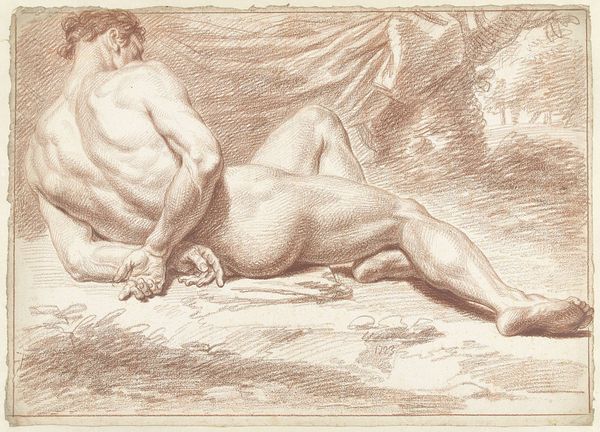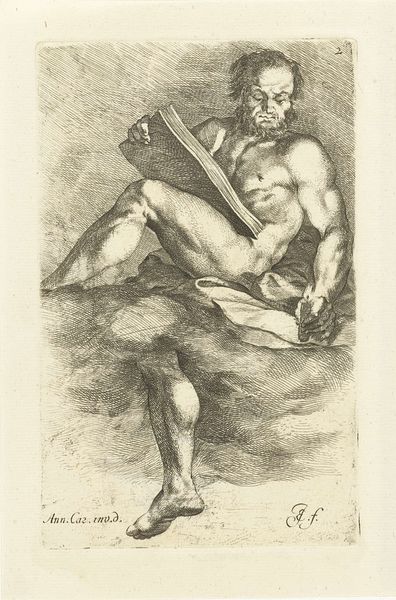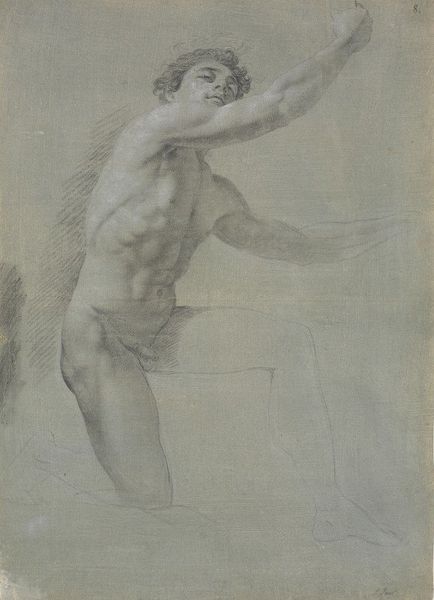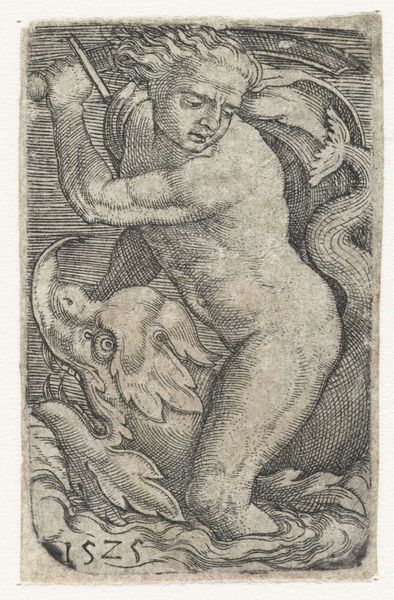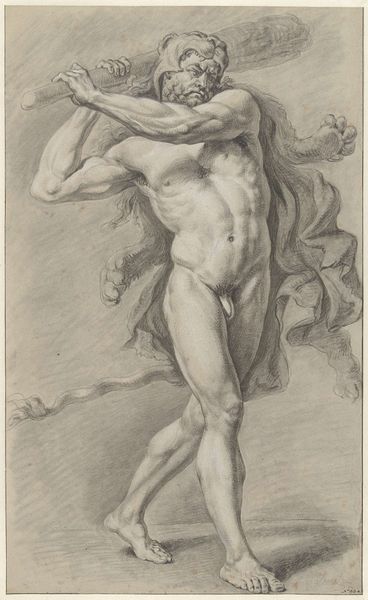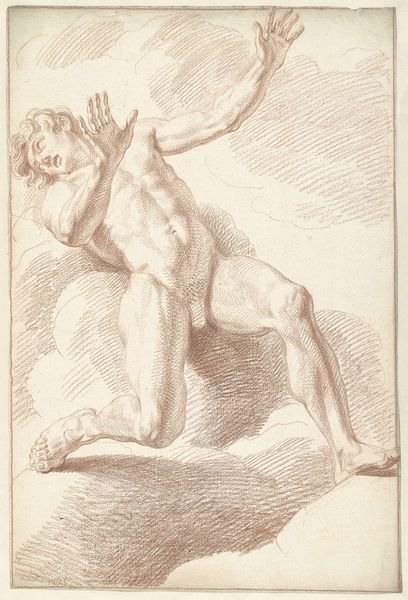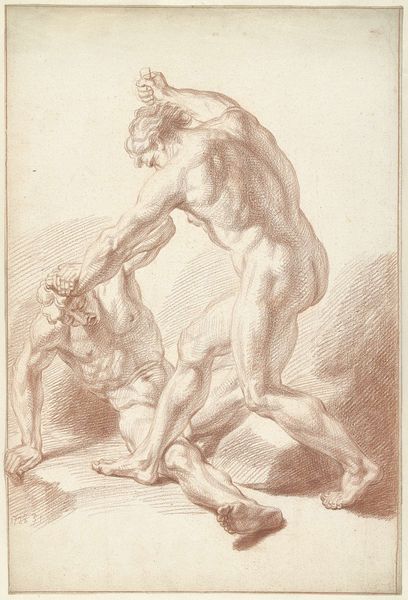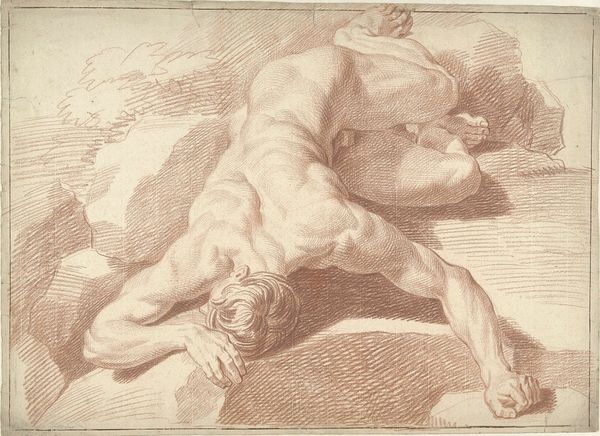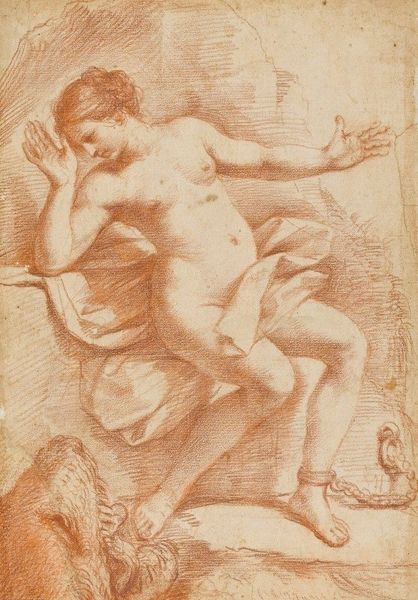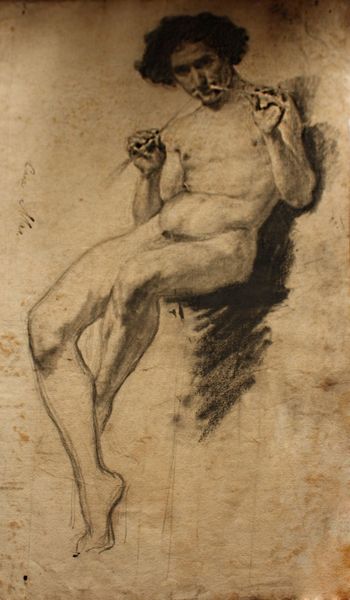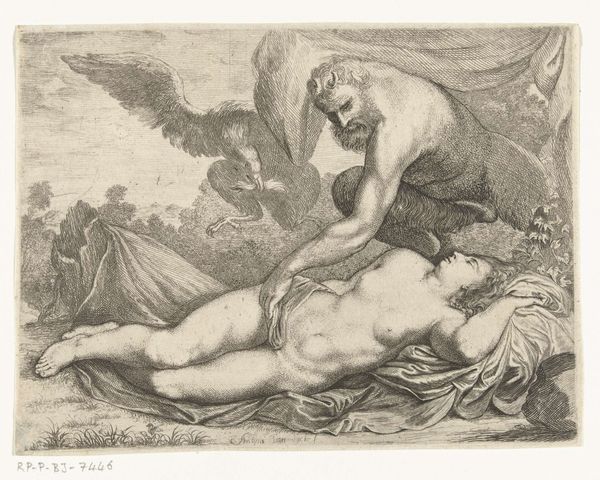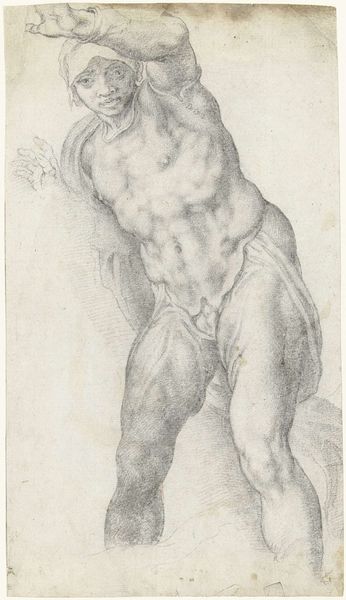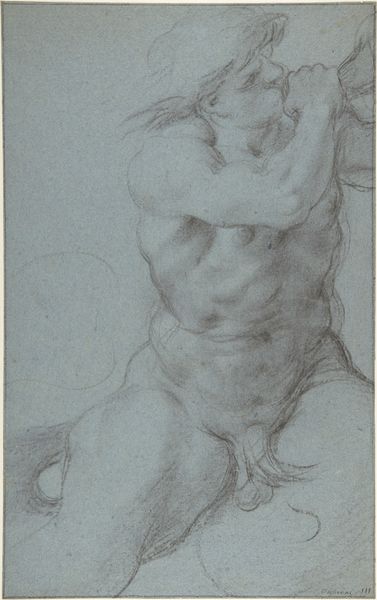
drawing, pencil
#
drawing
#
baroque
#
figuration
#
pencil drawing
#
pencil
#
flemish
#
history-painting
#
nude
Copyright: Public Domain: Artvee
Peter Paul Rubens made this drawing of the Death of Dido using chalk, probably in the early 17th century. Rubens, working in Flanders during the Counter-Reformation, often depicted classical and biblical scenes through the lens of heightened emotion and dramatic action. Here, we see Dido, the Queen of Carthage, taking her own life after being abandoned by Aeneas. The image draws heavily on the visual language of both classical antiquity and the artist’s present. Rubens’s patrons – wealthy merchants, aristocrats and church officials – understood these visual codes. The intensity of Dido’s despair, rendered with dynamic lines and stark contrast, speaks to the period’s interest in powerful expressions of human emotion. Understanding the art of Rubens's time requires us to consider the intellectual and religious climate, along with the artist's patronage networks. Resources like letters, contracts, and contemporary accounts can shed light on the creation of the artwork, enriching our comprehension of its meaning and impact.
Comments
No comments
Be the first to comment and join the conversation on the ultimate creative platform.
